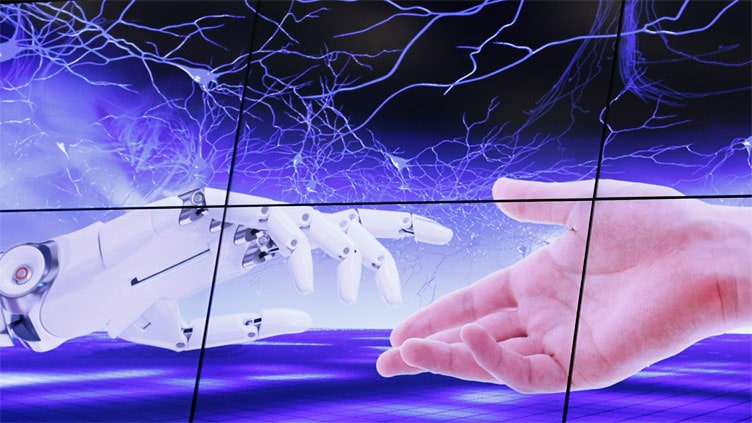Swedish researchers unveil advanced robotic hand mimicking human touch with precision

Technology
The implications of this technology extend beyond robotics and prosthetics, helps in medicine
(Web Desk) - Scientists from Uppsala University and Karolinska Institutet in Sweden have unveiled a remarkable robotic hand that can sense touch with human-like precision.
This cutting-edge technology holds immense promise for advancing tactile prosthetics and robotics, potentially transforming the landscape of assistive devices and medical interventions.
The innovative robotic hand is the result of a collaborative effort between experts from Uppsala University’s Signals and Systems Division, known for their prowess in data processing and machine learning, and a team from Karolinska Institutet's Department of Neurobiology, Care Sciences, and Society.
“Our system can determine what type of object it encounters as fast as a blindfolded person, just by feeling it and deciding whether it is a tennis ball or an apple, for example,” says Zhibin Zhang, docent at the Department of Electrical Engineering at Uppsala University.
Inspired by insights from neuroscience, this revolutionary artificial tactile system replicates the intricate response mechanism of the human nervous system to touch.
At its core, the artificial tactile system operates through electrical impulses to process dynamic tactile information, closely mirroring human sensory responses.
“With this technology, a prosthetic hand would feel like part of the wearer’s body,” Zhang explains.
Comprising an electronic skin embedded with touch-sensitive sensors, artificial neurons for signal conversion, and a sophisticated processor, this system enables real-time processing of tactile data and accurate identification of objects.
In rigorous trials, the robotic hand showcased its remarkable ability to learn and recognize a diverse array of objects, successfully grasping 22 different items and distinguishing between 16 distinct surfaces.
“We’re also looking into developing the system so it can feel pain and heat as well. It should also be able to feel what material the hand is touching, for example, whether it is wood or metal,” says Assistant Professor Libo Chen, who led the study.
This breakthrough not only enhances safety in human-robot interactions but also facilitates seamless and natural engagement.
The implications of this technology extend beyond robotics and prosthetics, with potential applications in medical monitoring and rehabilitation.
By equipping prosthetic limbs with human-like dexterity, this innovation could revolutionize various industries and profoundly impact the lives of individuals with movement disorders as Parkinson’s disease and Alzheimer’s disease or those recovering from strokes.
“The skin contains millions of receptors. Current e-skin technology cannot deliver enough receptors, but this technology makes it possible, so we would like to produce artificial skin for a whole robot,” says Chen.
Moreover, Zhang highlights the potential for the technology to detect and prevent falls in patients, “The technology can be further developed to tell if a patient is about to fall. This information can be then used to either stimulate a muscle externally to prevent the fall or prompt an assistive device to take over and prevent it.”
The research, supported by prestigious funding sources including the European Horizon 2020 Research and Innovation Programme, the Swedish Research Council, and the Swedish Foundation for Strategic Research.



